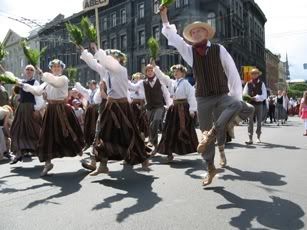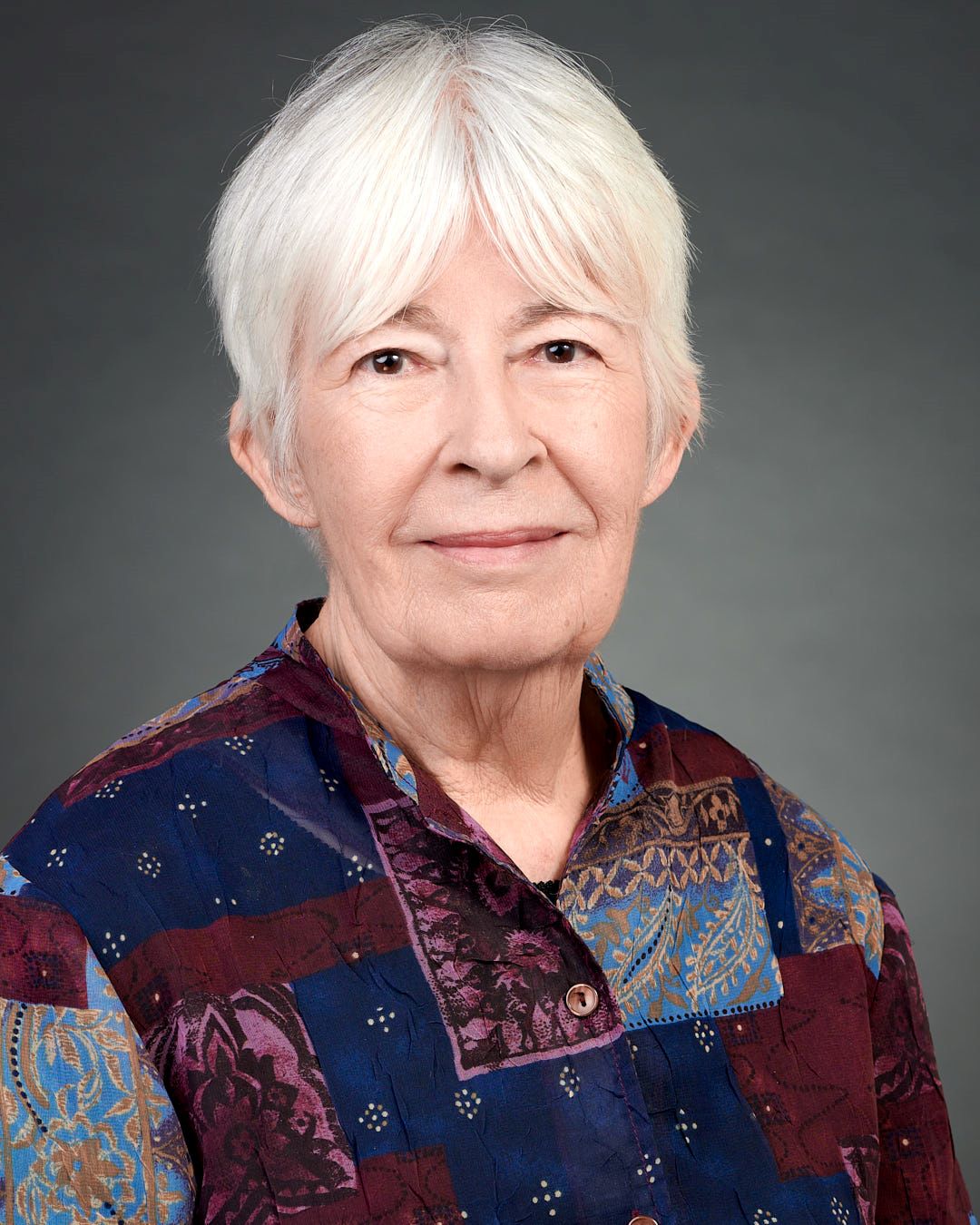Darkness and Light
By Juliet Marillier | August 7, 2008 |
 In July I travelled to the Baltic countries (Estonia, Latvia and Lithuania) and I’ve returned with my head full of fresh story ideas. I also paid a flying visit to Portugal, home of my most loyal and enthusiastic readership. Fans queued patiently at some length to have books signed during my public appearance at a Lisbon bookstore.
In July I travelled to the Baltic countries (Estonia, Latvia and Lithuania) and I’ve returned with my head full of fresh story ideas. I also paid a flying visit to Portugal, home of my most loyal and enthusiastic readership. Fans queued patiently at some length to have books signed during my public appearance at a Lisbon bookstore.
The following day, with members of online fan forum Mundo Marillier, I visited an eccentric palace and garden in Sintra, near Lisbon. Quinta da Regaleira is an extraordinary mélange of architectural traditions, crammed with mythological and esoteric references in which freemasonry plays a major part. Where else would you find a deep, damp initiation well, a library with a perilous trick floor – get too close to the books, break your leg – and a kangaroo gargoyle?
I returned from Europe with dozens of photos, mostly taken to aid my memory for future writing projects. There were many wonderful things to see, from the stunning architecture of Riga’s Art Nouveau buildings to the magical birch forests near the Baltic coast of Estonia. But the key was emotion: the feelings encapsulated in certain experiences, running the gamut from complete joy to profound sorrow. As a writer, I observe and take notes, I process and analyse intellectually, but above all I feel. It’s the emotional responses, rather than the intellectual ones, that form the seeds for stories to be written some time in the future.
I happened, quite by chance, to arrive in Riga on the opening day of the huge, five-yearly song and dance festival for the region. This saw 40,000 participants from all parts of Latvia and the other Baltic countries descend on the city for a week of performance and celebration. On the first day the participants processed across the city in national dress, singing and dancing as they went – it took seven hours for everyone to go past. An atmosphere of sheer joy enveloped the whole city, and I chose this photo to illustrate the exuberant spirit of the day. People were breaking out into song at bus stops, on trams, in coffee shops, everywhere. Visitors could not help being caught up in the jubilation.
At the opposite end of the emotional spectrum came my visits to the Occupation Museum in Riga, the Ninth Fort in Kaunas, Lithuania, and the Antakalnis Cemetery in Vilnius. Baltic history is heavy with oppression and struggle, from early medieval times right up to the 1990s. There are tales of courage and heroism and tales of betrayal and loss. I have posted here before about my belief in happy endings; or at least, my need to find a note of hope in every story, however tragic. Walking past the graphic images of partisans tortured to death, the documents outlining methods of mass execution, the meagre possessions of ordinary families uprooted and exiled in Siberia, it was hard to find that positive note. Tens of thousands of people, including most of Kaunas’s 37,000 Jews, were killed in the Ninth Fort during World War II. Part of the original prison remains, complete with isolation and torture cells. Those about to be executed scratched their names on the stone walls.
Antakalnis Cemetery contains a memorial for the unarmed civilians mown down by Soviet tanks at the Vilnius TV tower in 1991, and for other nationalists killed in the struggle for independence. At this memorial I finally gave way to tears when I saw that several of those killed were born in the same years as my own children. Personal qualities such as courage, strength and faith, or indeed cruelty, prejudice and apathy, do not belong only to the past. In every age people do bad things for what they believe are good reasons. In every age some are prepared to die for a cause, some are prepared to compromise their ideals, and some stay silent. Every age has its weak, its fearful, its cowed and broken. Every age has its heroes and its survivors.
Hope endures. I do believe in happy endings. There are the chess sets made in Siberia from chewed-up bread. There are the tiny improvised books made in those frozen places of exile, their pages alive with images of home and family, their spidery script setting out old folktales, memories of a brighter, warmer past. There are the garments knitted from string, the boxes carved from driftwood and painted with vegetable dyes, the little items crafted from seed pods. Without love, without hope, nobody makes a record, and those artefacts are the most powerful of records. Many perished in imprisonment or exile. Some survived. A few returned home and took up their lives again. Who knows, perhaps some of their descendants were on the streets of Riga last month, dancing and singing as if there were no such thing as evil in the world.










It’s astonishing what humans can endure and how hope thrives in the bleakest of places.
Love the photo, Juliet!
What an amazing experience you’ve described, Juliet. The name etchings in the prisons would’ve unraveled me, for sure. Thanks for sharing this with us.
“Personal qualities such as courage, strength and faith, or indeed cruelty, prejudice and apathy, do not belong only to the past. In every age people do bad things for what they believe are good reasons. In every age some are prepared to die for a cause, some are prepared to compromise their ideals, and some stay silent. Every age has its weak, its fearful, its cowed and broken. Every age has its heroes and its survivors.”
Thank you for this reminder.
The memorial you saw to Soviet slayings unfortunately can be found in so many other countries. It’s good that era is over.
Your travels sound wonderful and even better, you came home with great story ideas.
You’ve obviously come home with loads of marvellous material, Juliet. I hope all those wonderful experiences, joyful and painful alike, will resurface in a story about someone who lived in the Baltic in times past.
Oops, I meant Art Nouveau, not Art Deco. (Thumps self on head a couple of times for poor proof-reading.)
Yes, the trip did provide masses of material. I have my usual problem, too many ideas, not enough time to explore them all – I think that’s common to many writers.
I do love this particular photo, taken while kneeling perilously close to the path of the procession … I’m not a skilled photographer, and often have problems keeping my hands still enough. Just occasionally I take a picture that captures a moment of beauty, mystery or magic.